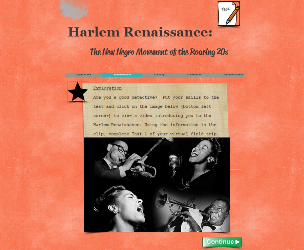Virtual Field Trips (VFTs) are guided explorations of web resources where the content is usually connected by topic, theme, or concept. VFTs are a great way to expand the classroom boundaries for your students by providing access to art, science, and history museums around the world. When budgets are an issue, virtual field trips are a viable alternative to the more traditional bus field trips. Face it—VFTs are inexpensive, less time-consuming, and much easier to plan in terms of logistics. You just need access to a computer and the Internet, and you are ready to start planning the trip!
Existing VFT Sites
There are a number of existing VFT sites that are designed to present content in a way that is engaging and interactive. VFT sites usually incorporate a variety of media, including text, photographs, podcasts, and vodcasts. For example, is your class studying frogs as part of an amphibian unit in science? You can visit the American Museum of Natural History site to view photographs of frogs and hear sounds that frogs make, along with other information about specific types of frogs. Studying World War II in social studies? Visit the Museum of Science and History-Chicago site to learn more about the U-505 that was part of a U-boat campaign that almost altered the outcome of WWII. Are you looking for an English/language arts field trip? Visit Google Lit Trips, a site developed by Jerome Berg, where you can use Google Earth to explore the journeys taken by characters from famous literature. Just a few of the Google Lit Trips options include:
- Grades 1-5—Bud, Not Buddy by Christopher Paul Curtis, Pedro’s Journal by Pam Conrad, or Number the Stars by Lois Lowry
- Grades 6-8—Chasing Lincoln’s Killer by Joseph Swanson, The Slave Dancer by Paula Fox, or My Brother Sam is Dead by James Lincoln Collier and Christopher Collier
- Grades 9-12—Kite Runner by Khaled Hossseini, the Grapes of Wrath by John Steinbeck, or Macbeth by William Shakespeare
Creating your own VFT
 You might also opt to create your own VFT that is more specifically tailored to a unit your students will be studying. You can use cloud-based applications, such as Wix, PBWiki, or Weebly to design your VFT and make it easily accessible. Shirley Owens, an elementary teacher, wanted her students to explore the world of butterflies as part of a science unit, so she developed a VFT where her students had an opportunity to visit the Butterfly Conservatory. Brittany Robinson, a middle school teacher, developed a VFT where her students could learn more about the Harlem Renaissance, while Cindy Wallace, a high school teacher, created a VFT site for her students to learn more about the swamps of Louisiana.
You might also opt to create your own VFT that is more specifically tailored to a unit your students will be studying. You can use cloud-based applications, such as Wix, PBWiki, or Weebly to design your VFT and make it easily accessible. Shirley Owens, an elementary teacher, wanted her students to explore the world of butterflies as part of a science unit, so she developed a VFT where her students had an opportunity to visit the Butterfly Conservatory. Brittany Robinson, a middle school teacher, developed a VFT where her students could learn more about the Harlem Renaissance, while Cindy Wallace, a high school teacher, created a VFT site for her students to learn more about the swamps of Louisiana.
All three of these teachers developed VFT sites that helped to scaffold their students’ exploration of a topic or theme by including text, photographs, and links to other sites that expanded the content in more depth.
Learn More About VFTs
You can learn more about the world of virtual field trips by reading these articles:
Virtual Field Trips can extend your classroom boundaries by providing your students access to museums, geographical regions, other environments, cultural history…the possibilities are endless. Get started today exploring the world of Virtual Field Trips!
 Kimberly Kimbell-Lopez, Ed.D., is the Hubberd H. & Velma Horton Boucher Endowed Professor in the Department of Curriculum, Instruction, and Leadership in the College of Education at Louisiana Tech University.
Kimberly Kimbell-Lopez, Ed.D., is the Hubberd H. & Velma Horton Boucher Endowed Professor in the Department of Curriculum, Instruction, and Leadership in the College of Education at Louisiana Tech University.
This article is part of a series from the International Reading Association Technology in Literacy Education Special Interest Group (TILE-SIG).